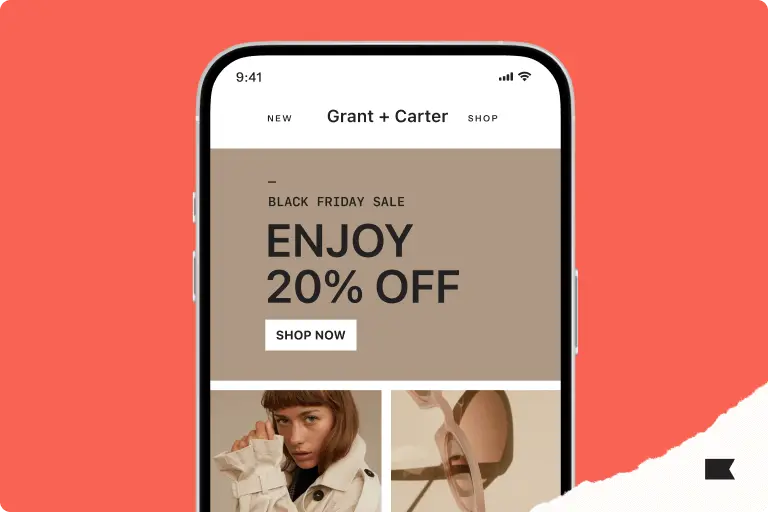How to ensure you’re meeting Google +Yahoo’s bulk email sender requirements, including DMARC set up
Google and Yahoo both updated their email sender requirements in Q1 2024. Even if you’re not sending to 5,000 gmail or yahoo mail addresses – it’s strongly advisable to adhere to these guidelines to ensure you’re not falling fowl of spam folder and unsubscribes.
The requirements are good for your customers, good for your deliverability score, and chances are, you’re already doing most of it anyway.
Here, we walk you through the steps you need to ensure you are taking when sending email.
Meeting these requirements makes it easier for inbox providers to identify you as a legitimate sender, which in turn will make it easier than ever for you to reach your subscribers.
Shane McElroy, product manager at Klaviyo: “These requirements have long been recommended by inbox providers as best practices. By moving from recommendation to enforcement, Google and Yahoo have made it clear that proper authentication is essential for email marketing success.”
“Meeting these requirements will make it easier for inbox providers to identify you as a legitimate sender, which in turn will make it easier than ever for you to reach your subscribers.”
Note: Because Google’s requirements are stricter—once you meet these, you’ll also satisfy Yahoo’s requirements. Here, in this article, we walk you through Google’s requirements.
Who needs to make changes? Everyone—but especially bulk senders
Google’s set of requirements are for all senders, with some additional for ‘bulk senders’—those who send 5,000 or more emails to Google accounts per day.
If you’re not sure if you meet that 5,000 threshold, here are some guidelines:
- Google will include personal accounts ending in @gmail.com and/or @googlemail.com.
- All traffic from a given sender will count towards that 5,000 threshold, including transactional emails.
So, you may be closer to that 5,000 threshold—and qualifying as a bulk sender—than you realise.
Now, let’s take a look at what the changes are and what you can do to prepare.
The 3 main email sender requirements
There are 3 main requirements that you’ll need to satisfy if you meet the bulk sender threshold:
1. Set up DMARC authentication for your sending domain
Set up DMARC authentication for your sending domain in your DNS provider yourself, and you can take care of it at any time. Your DMARC enforcement policy can be set to none, and Google has some specific guidelines to set your brand up for success.
Lauren Del Vecchio, manager of global email deliverability at Klaviyo, shares a tip on DMARC: “Configuring DMARC p=none is a great first step to analyse mail streams using your domain and working towards DMARC enforcement.”
Configuring DMARC p=none is a great first step to analyse mail streams using your domain and working towards DMARC enforcement.
2. Align your “From:” header with your domain
If you’re a bulk sender, you need your own sending domain—you can no longer use a shared domain. And the domain in your friendly “From:” header (what your subscribers see in their inbox) has to align with your sending domain in order to be compliant with DMARC alignment.
If your account is making use of an info@domain.com “From” address, it’s already aligned with a send.domain.com dedicated sending domain. So, you don’t need to update your “From: address” to something like info@send.domain.com.
This goes for both marketing and transactional emails.
Note: While you won’t be able to use a shared domain, you don’t need a dedicated IP—using a shared one is still OK.
For a deeper understanding, visit Klaviyo email sender checklist for meeting the requirement.
3. Make unsubscribing easier and clearer
This requirement is actually two:
- Your marketing emails must include a method to unsubscribe in just one step.
- There must also be an unsubscribe link in the message body—but that link does not have to be one click to unsubscribe.
“If it’s difficult for your recipients to unsubscribe, they’re more likely to mark your emails as spam, which damages your deliverability reputation,” McElroy points out.
If it’s difficult for your recipients to unsubscribe, they’re more likely to mark your emails as spam, which damages your deliverability reputation.
A clearly visible unsubscribe link and a short journey to no longer receive marketing messages are best practices. So, if you need to get compliant on this point, know that your deliverability score, sender reputation, and engagement with customers is likely to improve once you’ve got it in place.
Klaviyo automatically implements a “list unsubscribe header”—which gives instructions to Gmail and Yahoo to provide an unsubscribe link at the top of the email. This satisfies the “one click to unsubscribe” requirement, automatically applying to all marketing emails built in Klaviyo, so brands do not need to configure anything for the first element.
However you should still include an unsubscribe link at the bottom of your email template.
Requirements for all senders
If you send to Google email accounts at all—even if you don’t regularly send 5,000 messages or more a day—you need to adhere to some new requirements.
Keep your spam rates low
You probably try to keep your spam complaints as low as possible already—now you’ll need to keep them under 0.30%. You can use Google’s Postmaster Tools to monitor your spam complaint rates.
“Keeping spam complaints low has always been a deliverability best practice. This new requirement gives senders crystal clear guidelines and the tools you need to take full control over your sending reputation,” shares Del Vecchio.
This new requirement gives senders crystal clear guidelines and the tools you need to take full control over your sending reputation.
Don’t impersonate Gmail “From:” headers
This one should only impact you if you’re an entrepreneur just getting started. If you don’t yet have your own domain and you use gmail.com or googlemail.com in your friendly “From:�” address, your email will end up in the spam folder. So, make sure to get your own sending domain.
Del Vecchio sees this requirement as 100% positive:
“Ultimately,” she says, “this is a great chance to build your brand’s reputation with inbox providers and recognition with your customers.”
Ultimately, this is a great chance to build your brand’s reputation with inbox providers and recognition with your customers.
Are there any other new requirements?
There are a handful of new requirements that, if you’re using Klaviyo, you don’t need to worry about at all, as we’ve already taken care of them for you.
Those are:
- Setting up SPF and DKIM email authentication for your domain
- Ensuring that your sending domain and IP has valid forward and reverse DNS records
- Formatting messages according to the Internet Messaging Format standard
Bulk email sender requirements FAQs
Here are some frequently asked questions (and answers) about Google + Yahoo’s email sender requirements.
When will the new requirements be enforced?
Google stated they began to enforce the new requirements on 1 February, 2024, while Yahoo didn’t specify beyond Q1 of 2024.
When should my team start making these changes?
We recommend making these changes as soon as possible. If you haven’t or need to review, don’t panic—follow the Google + Yahoo bulk email sender checklist.
Who will these changes affect?
These changes are positive for everybody: your subscribers will have a cleaner, less spammy inbox, your deliverability score is likely to go up, and the requirements will keep you following email marketing best practices.

Related content

Migrating to Klaviyo? Get expert insights on timing, tools, and tips to maximize your impact before Black Friday & Cyber Monday.

Explore Black Friday Cyber Monday email examples from top brands like Beyond Yoga and Twinings. Learn what worked, get expert tips, and see their successful results.

Learn more about the best time to send marketing emails. Pinpoint the optimal time to capture user attention to boost engagement and ROI.